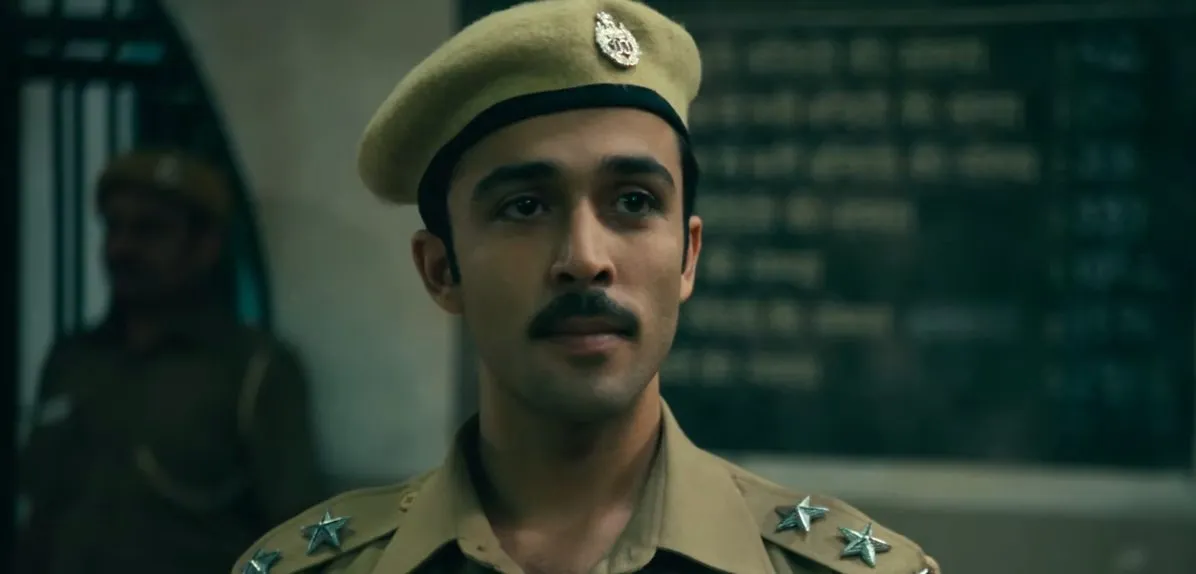Netflix’s Black Warrant takes viewers into the gritty world of India’s largest prison complex, showcasing the immense challenges of managing a volatile environment where chaos is only one misstep away. At the center of this narrative is Sunil Kumar Gupta, a young and determined prison officer motivated by two driving forces: a desire to uplift his struggling family and a deep-seated ambition to reform the system from within. His journey unfolds against a backdrop of gang wars, corruption, and the relentless complexities of prison politics.
The film doesn’t shy away from exploring the darker corners of the prison system, with its climax and resolution offering a layered commentary on power dynamics, redemption, and hope. Here’s a detailed breakdown of the key events and their implications.
Why Were All the Officers Asleep?
The pivotal scene in Black Warrant unfolds when Sunil arrives at work to find every prison officer unconscious and the prison gates wide open. The explanation for this bizarre occurrence lies in the cunning machinations of Charles Sobhraj, a notorious prisoner whose charm and intellect enable him to manipulate nearly everyone around him.
Charles, introduced as the first inmate Sunil encounters, immediately establishes himself as an unpredictable force. Despite Sunil’s initial resolve to steer clear of Charles, the latter’s influence pulls him into a web of subtle manipulations.
When DSP Rajesh Tomar enforces a strict lockdown to curb gang violence, Charles seizes the opportunity to further his own agenda. Unable to leave their cells, prisoners are subjected to worsening conditions, prompting Charles to start sending letters and petitions to authorities. To mitigate the fallout, Sunil strikes a deal with Charles, agreeing to allow a birthday celebration in exchange for peace.
What seemed like a harmless compromise turns out to be a critical miscalculation. Charles uses the birthday celebration as a smokescreen for his escape plan. The sweets distributed during the festivities are spiked with a sedative, leaving all the guards and officers unconscious. With everyone incapacitated, Charles and his accomplices unlock the prison gates and flee.
Adding a personal touch to his escape, Charles leaves Sunil a postcard featuring a magician’s disappearing act, a nod to his own vanishing from the supposedly impenetrable prison.
The Gang Wars and Sunil’s Strategy to Restore Order
The prison is a powder keg of tension, with three dominant gangs—the Tyagi, Haddi, and Sardar gangs—constantly vying for power. Their rivalry escalates further after the assassination of the Prime Minister, which reflects the nation’s volatile political climate.
DSP Tomar initially manages the gangs by fostering a fragile alliance between the Tyagi and Haddi factions against the Sardar gang. However, this delicate balance crumbles when the Tyagi gang turns against prison officials, brutally assaulting officer Dahiya and threatening Tomar and his family.

Sunil devises an innovative strategy to dismantle the gangs’ influence. First, he enlists Mangat, a key figure in the Sardar gang, to align with the prison authorities. This alliance neutralizes one of the three power blocs. Next, key members of the Tyagi gang are transferred to different prisons, effectively scattering their influence. The remaining gang members are bribed to reveal hidden weapons, which are discovered in a vegetable patch that Tomar had meticulously tended.
To prevent any single gang from filling the power vacuum left by the Tyagi gang’s fall, Sunil implements a system that separates gang members by housing inmates alphabetically rather than by affiliation. This effectively dissolves the gangs, restoring a semblance of peace to the prison.
The Personal Toll on Sunil
Sunil’s dedication to reform comes at a personal cost. His family views his job as a prison officer with disdain, equating it to being imprisoned himself. His mother discourages him from disclosing his profession, and his brother’s engagement is called off when the truth comes to light.
Despite these setbacks, Sunil finds allies within the system. His bond with Mr. Saini, a senior officer who shares his idealism, provides a source of encouragement. Saini’s metaphor of the peacocks in Tihar—a hidden beauty within the prison’s harsh environment—becomes a guiding principle for Sunil.
However, the job’s toll becomes evident as Sunil grapples with the prison’s toxic environment. His relationship with Priya falters, with her questioning whether she can endure the emotional strain he brings home. Their future remains uncertain, but professionally, Sunil begins to see the fruits of his efforts.

The Meaning of the Peacock
The peacock serves as a recurring symbol of hope and transformation. Early in the film, Saini mentions the elusive peacocks in Tihar, representing the hidden potential for beauty and change in the prison system. At the height of his despair, Sunil starts to believe that true reform is impossible. But by the film’s end, after successfully dismantling the gangs and implementing lasting changes, he finally sees a peacock, reaffirming the possibility of progress.
The Final Changes
In the wake of Charles’s escape and the dismantling of the gangs, several reforms are introduced to prevent future chaos. The prison is divided into three units, each overseen by its own superintendent, to improve management and accountability. Sunil also realizes one of his long-term goals: establishing legal aid for prisoners, a project initiated in honor of Saini after his tragic suicide.
Though the journey has been fraught with challenges, the changes signal a brighter future for Tihar. For Sunil, the prison transforms from a place of despair to one of possibility.
Conclusion
Black Warrant is a gritty exploration of the complexities of the prison system, layered with themes of power, corruption, and redemption. Sunil’s journey reflects the struggle of an individual trying to reform an entrenched system while grappling with personal sacrifices.
The film’s ending is both hopeful and sobering, with Sunil achieving significant milestones but acknowledging the long road ahead. The symbol of the peacock encapsulates the story’s essence: amidst the darkness, there is always a glimmer of light, waiting to be uncovered.

